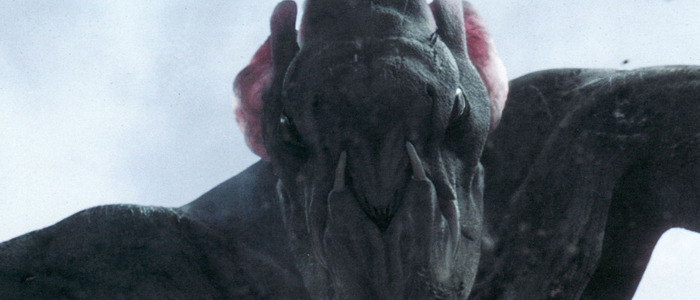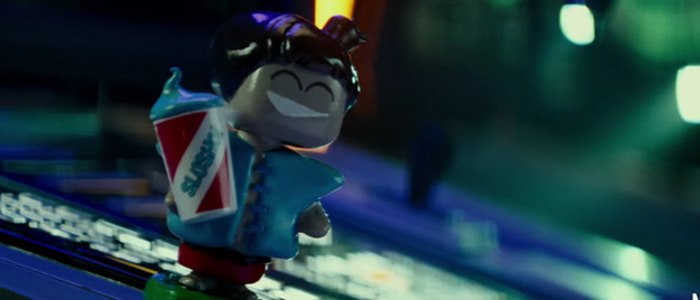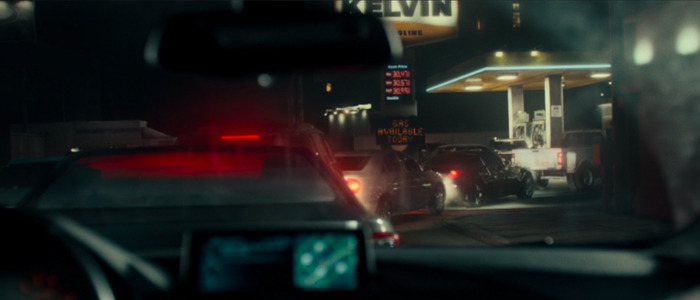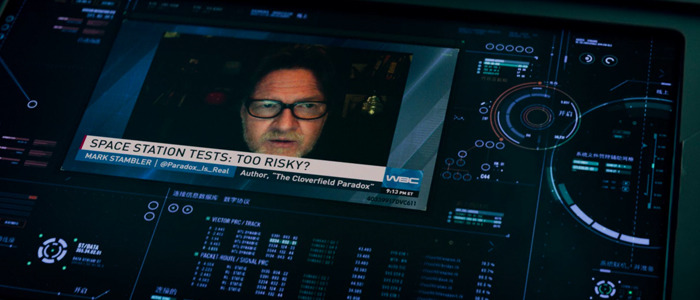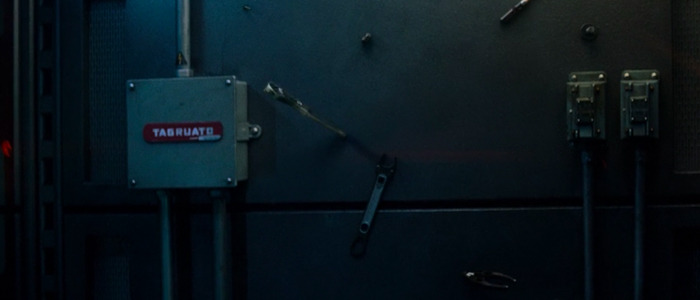How 'The Cloverfield Paradox' Connects With The Other 'Cloverfield' Movies
Paramount and Netflix surprised the world when they released The Cloverfield Paradox immediately after the Super Bowl last night. Now that we've seen the movie, what Cloverfield Paradox connections are lurking in the film that link it to the rest of the Clover-verse? Let's find out.
24 hours ago, we didn't even know the title of this movie, let alone when we'd see a trailer. Today, many of us have already watched the completed final product. It was a bold and surprising move in an industry that increasingly avoids doing anything bold or surprising, and that's worthy of praise. Now, let's explore how The Cloverfield Paradox connects to the other movies.
The Clover-verse
When I spoke with director Dan Trachtenberg during the press rounds for 10 Cloverfield Lane back in 2016, he made sure to clarify that his movie was "not on the same timeline" as Matt Reeves' 2008 Cloverfield. Since The Cloverfield Paradox takes place in 2028, it appears that this sequel is also on a separate timeline. But let's dive into the connections between the movies, starting with a big one.
Warning: spoilers for every Cloverfield movie are coming up.
Clover
The alien in the original movie, affectionally nicknamed "Clover," might not be the same creature that pops up briefly in The Cloverfield Paradox, but it's certainly the same species. Just before Michael Hamilton (Roger Davies) finds Molly (Clover Nee) in the rubble of a destroyed building, he sees a huge creature stepping away in the shadows in the top left of this frame. It has the same distinct walk as the creature from the 2008 movie:
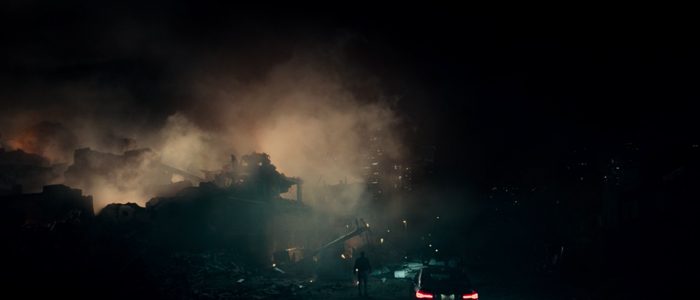
It's almost impossible to detect in a screenshot, but if you watch the movie, you can see the creature move through the smoke.
The film's final moments make the connection even more explicit when a giant creature with a very familiar head bursts above the cloud line to roar just before the movie cuts to black:
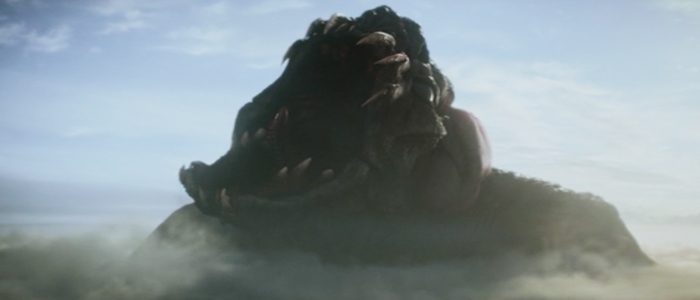
Here's my question: is this version of Clover actually much larger than the one first seen in 2008's Cloverfield? This creature emerges in the foreground after the space capsule falls through the clouds in the deep distance, which implies that this thing is huge. But without any buildings or landmarks around, it's impossible to tell if this is a larger version of Clover than the one we've already seen.
Slusho!
Slusho! should be a familiar name for those who've been following the Cloverfield movies from the beginning. It's a drink brand that Cloverfield protagonist Rob Hawkins (Michael Stahl-David) was planning to work for. That movie featured a going-away party for Rob, who had accepted a job at Slusho! and was preparing to move to Japan to start there.
Slusho! appears very briefly in one shot during The Cloverfield Paradox, as part of the spaceship equivalent of hanging dice from a rearview mirror.
(The Slusho! brand pre-dates the Clover-verse, having first popped up in an episode of the J.J. Abrams-produced TV series Alias.)
Kelvin Gas
The Cloverfield Paradox opens with Ava Hamilton (Gugu Mbatha-Raw) and her husband Michael in a long line at a gas station called Kelvin. Like Slusho!, Kelvin has a long history of popping up in J.J. Abrams projects. Kelvin was Abrams' grandfather's name, and there are shout-outs in nearly every Abrams film and TV show he's produced. In terms of the Clover-verse, we saw it when 10 Cloverfield Lane protagonist Michelle (Mary Elizabeth Winstead) filled up her car in the beginning of that movie: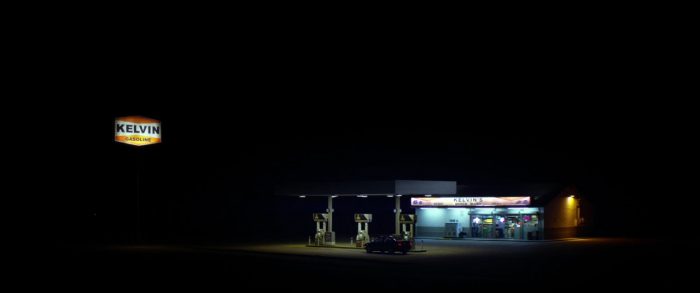
Kelvin also appears briefly on the hatch that Commander Kiel tries to open near the end of The Cloverfield Paradox, as you can see here:
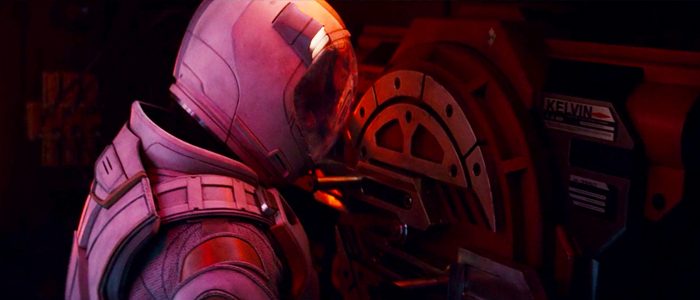
It's unclear if that mention of Kelvin is a result of blending the two space stations thanks to the particle accelerator. Maybe in Earth 2, the Kelvin company deals with space station manufacturing instead of selling gasoline.
Stambler
John Goodman's character's name in 10 Cloverfield Lane is Howard Stambler. The scientist played by Donal Logue in The Cloverfield Paradox also has that last name. Are the two related? Doubtful, because the events take place in separate dimensions. But perhaps people with the name Stambler are somehow fated to be involved in the goings-on depicted in these films.
Tagruato
Tagruato is the fictional parent company of both Slusho! and Bold Futura, the subsidiary where Howard Stambler worked before he went into his bunker in 10 Cloverfield Lane. (There's also a bunker scenario in The Cloverfield Paradox, though it's not nearly as disturbing or creepy.) The name pops up briefly on an electrical panel in The Cloverfield Paradox.
Some have assumed the escape pod that falls through the clouds at the end of this movie is the same thing that eagle-eyed fans spotted falling into the water during the very end of the original Cloverfield. This is not the case. Cloverfield takes place years before The Cloverfield Paradox, so the two are unrelated. Additionally, bonus materials and ARG campaigns have proven that it was a Japanese satellite that was seen falling through the sky.
What This Means For The Clover-verse
Though the franchise's filmmakers have made great pains to explain that these movies all take place on different timelines, the particle accelerator event depicted in this sequel might very well be The Big Bang of the Clover-verse: an event that caused a rip in the membrane of space and time and allowed aliens and creatures into different dimensions. So it seems like each movie takes place in a separate dimension, and because this particle accelerator mishap occurred and can influence the past and future on any given timeline, the World War II-set thriller Overlord (AKA Cloverfield 4) will still be able to feel the effects of this film without technically being set in the same world as any of the existing Clover-films.
The Cloverfield Paradox is streaming on Netflix right now.

